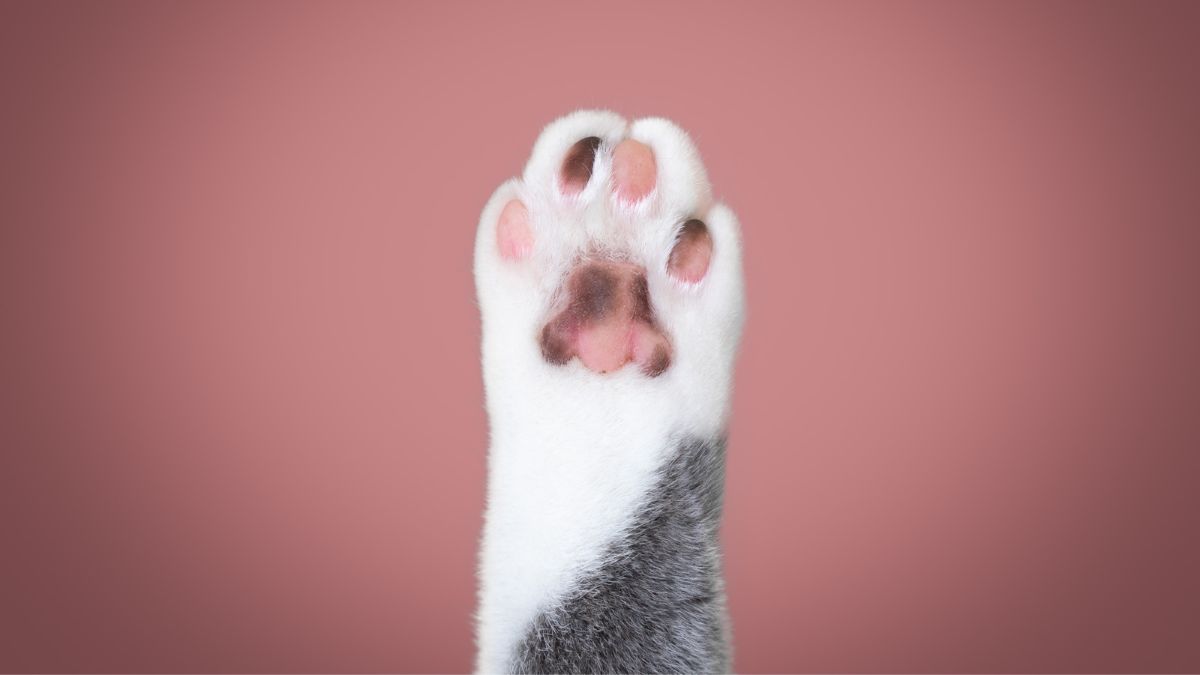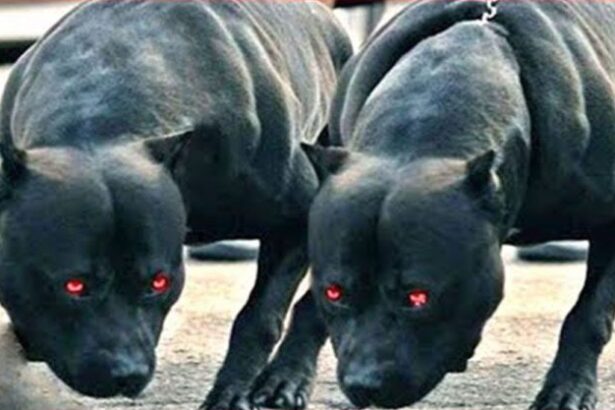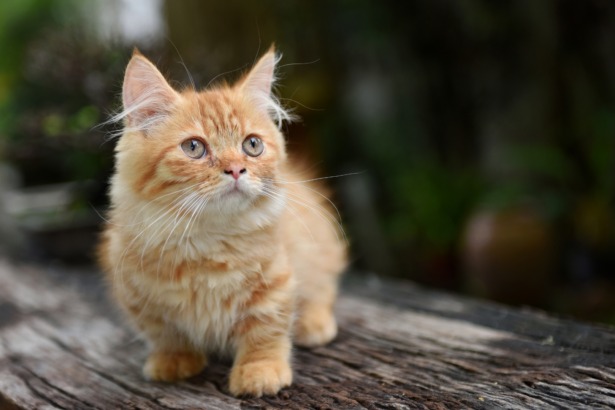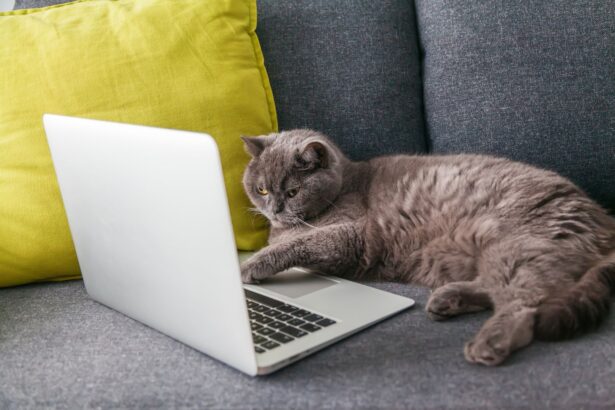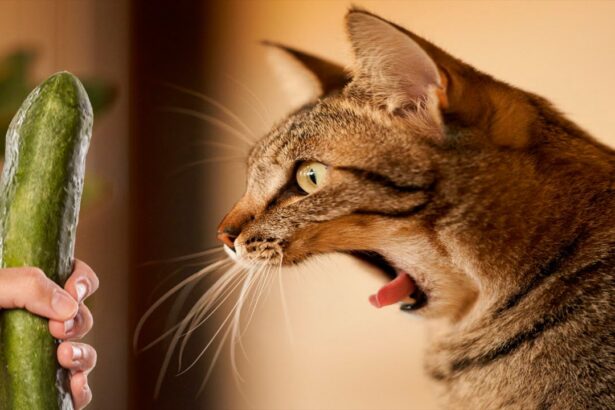Cat paws — those little velvet hearts — are far more than adorable. They cushion, grip, balance, communicate… and sometimes stamp tiny damp prints on the floor. Ready for a gentle, useful tour of those pads?
Cat paws: anatomy and quiet superpowers
Each paw teams up three essentials: pillowy pads, retractable claws, and a light but sturdy framework of bones and tendons. The result? A whisper-soft step worthy of a ballerina.
- Paw pads: natural shock absorbers that insulate from hot/cold surfaces and house sweat glands.
- Claws: key for climbing, hunting, self-defense… and stretching with flair.
- Bones and tendons: precision and flexibility for those physics-defying turns on the sofa.
Fun fact: cats sweat through their paw pads. When stressed or hot, they can leave tiny, damp pawprints.
Everyday paw care made easy
Happy paws, happy cat. A simple routine helps your feline stay comfy and lets you spot small problems early — a great way to track the signs of a healthy cat.
- Check pads weekly: look for cuts, splinters, redness, or dry patches.
- Wipe after outdoor time or litter visits with a damp cloth — no harsh soaps.
- Trim claws regularly if they don’t wear down enough (indoor cats, seniors). Need a calm, step-by-step? Here’s how to trim your cat’s claws without stress.
- Practical tip: create a “paw station” by the litter box: a silicone mat, a microfiber cloth in a small airtight box (with plain water), and vet-approved paw balm. A quick 10-second wipe-and-dab after scooping keeps pads clean and supple.
Common mistake to avoid: cutting too short. Never clip the pink quick you can see in light claws. For dark claws, take tiny slivers. This prevents pain and bleeding and builds trust.
Paws and behavior: what they reveal
Paws speak volumes. Gentle kneading — rhythmic pressing on your lap or blanket — often means comfort, bonding, and a throwback to kittenhood. Curious? Learn more about why cats knead.
- Scratching: territory marking and claw maintenance. Offer several scratchers (vertical and horizontal) and watch your sofa breathe again. Need a plan? Try these tips to stop furniture scratching.
- Soft taps with a paw: often a polite request for attention… or snacks.
- Hunting mode: silent steps, weight on the back pads, claws ready to deploy — pure efficiency.
Surprising detail: the “extra” little pad higher up the front leg — the carpal pad — acts like a brake. It helps with sudden stops and tight turns when play gets serious.
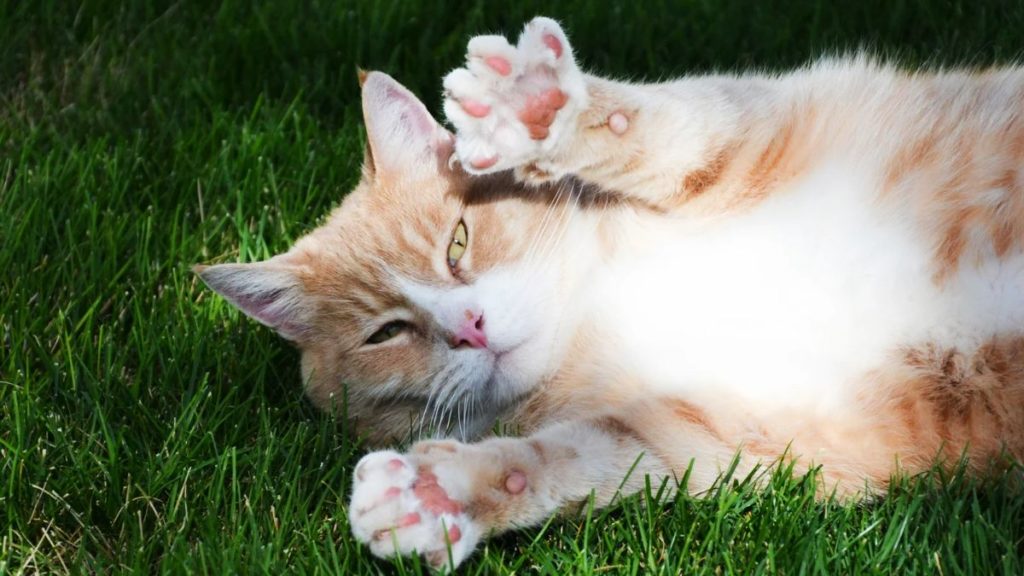
Small ouches and red flags
Paws are tough, but not invincible. Here’s what to watch — and when to call your vet.
- Cuts, splinters, minor burns (hot pavement, cleaning products): rinse with lukewarm water, pat dry, monitor.
- Infections: redness, heat, swelling, discharge, or obsessive licking = vet visit recommended.
- Broken or ingrown claws: painful and infection-prone, especially if your cat limps.
- Irritations/allergies: red or puffy pads, itchiness, tentative walking.
- Very dry pads: a pet-safe balm helps; if cracks persist, seek professional advice.
Gentle reminder: skip irritating disinfectants (alcohol, concentrated hydrogen peroxide). Use a vet-recommended solution and your practitioner’s expertise if in doubt.
One more trivia nugget: paw pads can subtly change shade with age or temperature. Sudden color changes with sores, pain, or swelling, though, deserve a check-up.
In short
Cat paws are the quiet engine of feline grace. With a pinch of prevention, a simple routine, and the right accessories, they stay soft, clean, and ready for naps… and zoomies.
FAQ
How often should I trim my cat’s claws?
Every 2–4 weeks, depending on activity and surfaces. Indoor and senior cats often need more frequent trims. A calm routine helps a lot.
What’s the safest way to clean my cat’s paw pads?
Use lukewarm water and a soft cloth. Avoid harsh soaps and strong disinfectants. Pat dry and apply a vet-approved balm if pads are dry.
Why do my cat’s paws leave damp prints?
Cats sweat through their pads, especially when hot or stressed. Offer fresh water, a cool spot, and reduce stressors to help.
When should I see a vet for a paw problem?
Limping, swelling, foul odor, discharge, persistent cracks, or intense licking are all red flags. Better a quick check than a stubborn infection.


